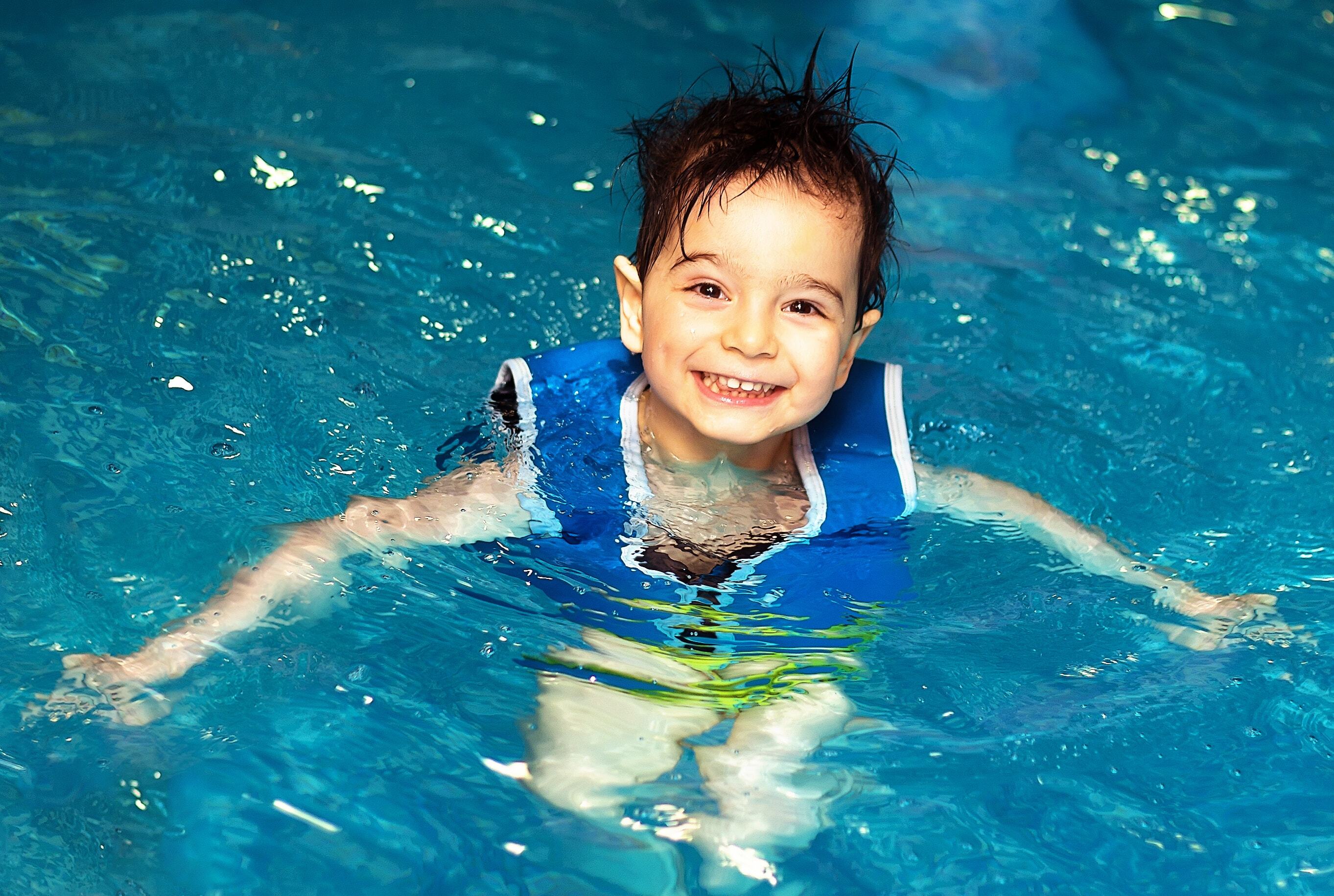Are Swimming Lessons Safe During Covid

Written by Sunsational — 7 min read

The COVID19 pandemic has many people wondering if swimming lessons are still safe. Yes, swimming lessons are still safe during COVID, according to CDC findings. The CDC has announced that there is no evidence that the novel coronavirus can spread through recreational waters. The use of chlorine and bromine to treat pool water inactivates the novel coronavirus making properly maintained pools safe from the virus. Public and community pools pose a slightly higher risk of infection due to the shared surfaces and possible lapses in social distancing practices. The safest swim lessons during the COVID19 pandemic are private lessons at a home pool.
Lessons at a home pool are the safest option during the COVID19 pandemic, but proper disinfection and distancing practices should be observed to help mitigate any possible risk of infection. It is very important that the pool be properly maintained. Pool water should be tested for appropriate chemical levels twice per day when the pool is in use. Chlorine in a home pool should be between 1-10 ppm or 3–8 ppm for bromine, while pH should be between 7.2 and 7.8. It is important to monitor both the chlorine/bromine levels in the pool as well as the pH. While the chlorine and bromine are responsible for inactivating any potential germs, pH is also essential to keeping the pool water safe. A pH outside of the recommended range can decrease the effectiveness of the disinfectant. Families with home pools should be vigilant when it comes to proper pool disinfection to help mitigate the risk of exposure to the virus.
The risk of exposure can be further decreased by practicing social distancing, wearing a face covering while outside the pool, disinfecting equipment and touched surfaces regularly, avoiding large gatherings at public pools, and not sharing pool equipment.
Rise In Child Drowning During COVID Pandemic
Drowning remains the leading cause of death for children under the age of 4, and remains in the top 3 causes of death for individuals under the age of 20. Most unintentional drowning victims are missing for less than 5 minutes when the incident occurs. The Journal of the American Medical Association has found that, “participation in formal swimming lessons was associated with an 88% reduction in the risk of drowning in the 1- to 4-year-old children.”With COVID19 lockdowns many traditional swim schools are closed, and children are spending more time at home than usual leading to increased risk of a drowning incident for families with backyard swimming pools. Swim lessons are not only safe during the pandemic, but essential for reducing the risk of drowning and saving lives.
Curated Best Water Safety Practices During The Pandemic
- Enroll in formal swimming lessons Formal swimming lessons have been shown to decrease the risk of drowning by as much as 88% in the one- to four-year-old age group. This goes to show the importance of formal swimming lessons in avoiding child drowning in any event that your child finds their way into a pool or body of water. Barriers, floatation devices and constant supervision will not always be there, but necessary water safety and survival skills last a lifetime, making swimming lessons the best deterrent from drowning.
- Install fences and pool barriers The majority of drowning deaths happen in backyard pools. Research suggests that more than half of all swimming pool drownings can be prevented by installing a barrier around the pool. The CDC recommends four-sided pool fences at least 4ft tall with a self-closing, self-latching gate that opens away from the pool. Keep the gate locked at all times and check regularly that it is in working order.
- Remove or fence other backyard water hazards Ponds, fountains, inflatable pools, bird baths, etc. Nationally, 25% of drownings occur in water just 3ft deep or less. If you have any water fixture in your yard, consider removing it or also fencing it off for your child's safety
- Always supervise children in or around water While it seems obvious to every parent that we should be supervising our children in the water, distractions happen easily. This is especially true during this time when parents are now working from home and constantly on the look out for texts, emails and phone calls. Drowning can happen in as little as 20 seconds and contrary to popular notion, most drowning occur silently with no loud thrashing or verbalization of distress. According to a study conducted by the CPSC, most drowning victims were being supervised by one or both parents at the time of the incident.Designated supervisors should avoid any distractions such as cellphones, conversations or reading and devote 100% of their attention to the children.
- Learn CPR for emergency cases Seconds count in a drowning emergency and survival depends on rescuing the child quickly and restarting the breathing process. Knowing how to correctly perform CPR can be the difference between life and death as you away emergency responders to arrive. You can find CPR & First Aid Training Classes near you through the American Heart Association.
Advocating For Better Pool Safety Awareness
With stay-at-home orders in place across many parts of the United States and world, accurate and effective water safety education is critically important. It is important to stay even more vigilant as dangers of drowning are even more present as children are home more consistently. Remember, most drowning accidents happen quickly and more than 3 out of 4 drowning victims had been missing from sight for 5 minutes or less. Following the CDC guidelines, swimming lessons are safe during COVID and perhaps more vital than ever. By utilizing all the layers of protection we can help prevent drowning tragedies and ensure your family is safer in and around the water.
Share on socials




